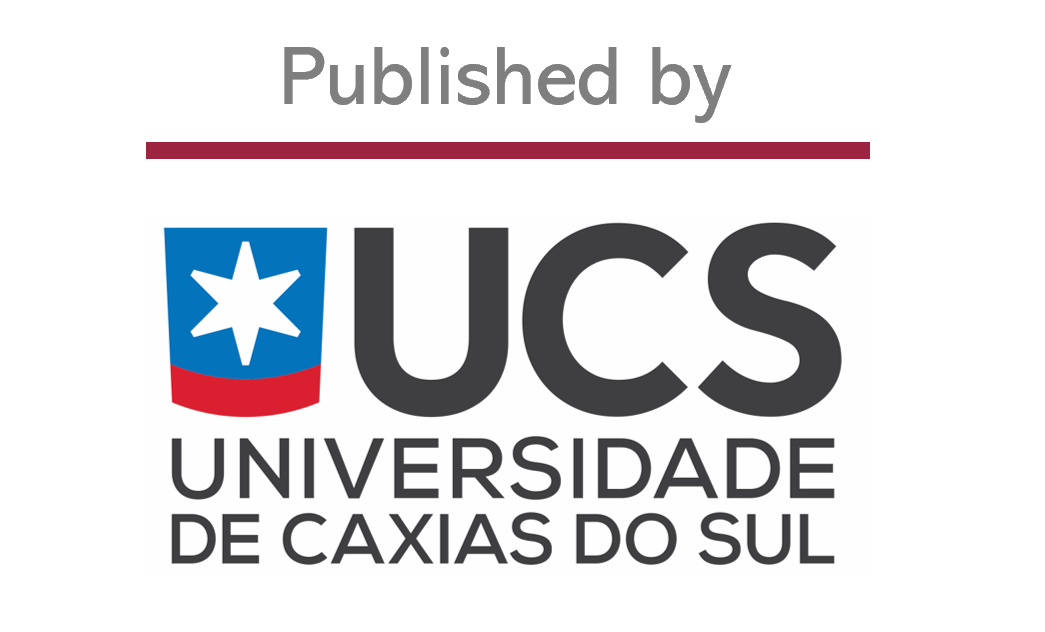IT self-service applications in polyclinics: a model for the improvement of the patient-treatment process
DOI:
https://doi.org/10.18226/23185279.v4iss3p167Abstract
Information technology has become essential in supporting growth and sustainability of many types of organizations, including healthcare organizations. These organizations can improve its processes and patient flow. However, IT in the hospital sector can be considered underdeveloped when compared to other sectors. For this reason, an analysis of the healthcare system is useful, mainly with the goal of minimizing the cost of healthcare and maximizing the quality of the patient’s processes. In this paper, our aim was to present a framework showing the applicability of IT self-servicing app in patient’s treatment. The framework is structured by five types of self-servicing IT apps and eight patient’s processes steps, settled in a Polyclinic Cardiology. Our results affirm that self-servicing IT apps are applicable both for medical staff and for the patient’s satisfaction and treatment, from the “information help desk” step to the "patient check-out". Our work could contribute for implementations and suggestions in future research. In fact, in a increasingly digitalized world, the healthcare sector has a great growth and improvement potential to receive thanks to IT.
References
Mens, J.F. (2016). Master Thesis: A maturity model for BPM capability assessment in Dutch hospitals(supervisors: Batenburg, R.S., Spruit, M.R. and Raveysteyn J.P.P.).
Øvretveit, J. (2000). Total quality management in European healthcare. International journal of health care quality assurance, 13(2), 74-80.
De Haes, S., Gemke, D., Thorp, J., & Van Grembergen, W. (2011). Analyzing IT value management at KLM through the lens of VAL IT. ISACA journal, 5, 27-34-
Wu, S. P.-J., Straub, D. W., & Liang, T.-P. (2015). How information technology governance mechanisms and strategic alignment influence organisational performance: Insights from a matched survey of business and IT managers. MIS Quarterly, 39(2), 497-518.
Buntin, M. B., Burke, M. F., Hoaglin, M. C., & Blumenthal, D. (2011). The benefits of health information technology: a review of the recent literature shows predominantly positive results. Health affairs, no 30(3), pp 464-471.
Lenz, R. and Reichert, M. (2005) IT Support for Healthcare Processes. In: Proceedings 3rd International Conference on Business Process Management (BPM'05), 5 - 8 Sep 2006, Nancy, France. pp. 354-363.
Helfert, M. (2009). Challenges of business processes management in healthcare: Experience in the Irish healthcare sector. Business Process Management Journal, 15(6), 937-952.
Paré G, Sicotte C. (2001). Information technology sophistication in health care: An instrument validation study among Canadian hospitals. International Journal of Medical Informatics. 63:205–223.
Jaana, M., Tamim, H., Paré, G., & Teitelbaum, M. (2011). Key IT management issues in hospitals: Results of a Delphi study in Canada. International Journal of Medical Informatics, 80(12), 828–840. http://doi.org/10.1016/j.ijmedinf.2011.07.004
Weske, M. (2012). Business Process Management Methodology. In Business Process Management (pp. 373-388). Springer Berlin Heidelberg.
Hevner, A. R., March, S. T., Park, J., & Ram, S. (2004). Design science in information systems research. MIS Quarterly, 28(1), 75-105.
Brooks, L. Mehta, R. & Huang, Z. (2011). Information sharing in NHS polyclinics, International Conference on Information Systems (ICIS).
Meli, L., Khalil, I. and Tari, Z. (2014). Load-sensitive dynamic workflow re-orchestration and optimisation for faster patient healthcare. Computer Methods and Programs in Biomedicine, vol 113, no 1, pp 1-14
Bhattacharjee, P., & Ray, P. K. (2014). Patient flow modelling and performance analysis of healthcare delivery processes in hospitals: A review and reflections. Computers & Industrial Engineering, no 78, pp 299-312.
Rohleder, T. R., Lewkonia, P., Bischak, D. P., Duffy, P., & Hendijani, R. (2011). Using simulation modeling to improve patient flow at an outpatient orthopedic clinic. Health care management science, 14(2), 135-145.
Mallmann, G. L., Plaisier, M., Versendaal, J., Ravesteyn, P. (2014). The Influence of Digital Self-Services on Patient's Experience in a Polyclinic Context: A Framework Construction. Journal of International Technology and Information Management, vol 23, no 3-4.
Bitner, M. J., Ostrom, A. L., & Meuter, M. L. (2002). Implementing successful self-service technologies. Academy of Management Executive, 16(4), 96-109.
Mans, R. S., Schonenberg, M. H., Song, M., van der Aalst, W. M., & Bakker, P. J. (2008). “Application of process mining in healthcare–a case study in a dutch hospital.” In International Joint Conference on Biomedical Engineering Systems and Technologies. Springer Berlin Heidelberg, pp 425-438
Mans, R. S., Aalst, van der, W. M. P., & Vanwersch, R. J. B. (2013). Process mining in healthcare : opportunities beyond the ordinary. (BPM reports; Vol. 1326). BPMcenter.or
Mans, R. S., Schonenberg, M. H., Song, M., van der Aalst, W. M., & Bakker, P. J. (2008, January). Application of process mining in healthcare–a case study in a dutch hospital. In International Joint Conference on Biomedical Engineering Systems and Technologies (pp. 425-438). Springer Berlin Heidelberg.
Ravesteyn, P., Zoet, M., Spekschoor, J., & Loggen, R. (2012). Is There Dependence Between Process Maturity and Process Performance?. Communications of the IIMA, 12(2).
Devaraj, S., Ow, T. T., & Kohli, R. (2013). Examining the impact of information technology and patient flow on healthcare performance: A Theory of Swift and Even Flow (TSEF) perspective. Journal of Operations Management, no 31(4), pp 181-192.
Harding K.E. , Bottrell J. (2015). Specific timely appointments for triage reduced waiting lists in an outpatient physiotherapy service. Physiotherapy, In Press.
Lenz, R., Miksch, S., Peleg, M., Reichert, M., Riano, D., & ten Teije, A. (2013). Process support and knowledge representation in health care. Lecture Notes in Artificial Intelligence (first ed.), Springer, New York.
Meuter, M. L., Ostrom, A. L., Roundtree, R. I. & Bitner, M. (2000). Self-Service Technologies: Understanding Customer Satisfaction with Technology-Based Service Encounters. Journal of Marketing, 50-64.
Gupta, A., Das, S., McEwan, T., & Jayachandra, M. (2010). Biometric Self Service for Healthcare.
Buntin, M. B., Burke, M. F., Hoaglin, M. C., & Blumenthal, D. (2011). The benefits of health information technology: a review of the recent literature shows predominantly positive results. Health affairs, 30(3), 464-471.
Brooks, L., Mehta, R., & Huang, Z. (2011). Information Sharing in NHS Polyclinics. International Confernece on Information System, ICIS.
Misser, N. S., Versendaal, J., Methorst, M., & Stork, B. (2014). Dutch Healthcare: An Overview and Application.
Swan, M. (2009). Emerging patient-driven health care models: an examination of health social networks, consumer personalized medicine and quantified self-tracking. International journal of environmental research and public health, 6(2), 492-525.
Salamati, F., & Zbigniew, J. P. (2014) Personal Wellness: Complex and Elusive Product and Distributed Self-Services. Procedia CIRP 16. 283-288.
Rozenblum, R., Donzé, J., Hockey, P. M., Guzdar, E., Labuzetta, M. A., Zimlichman, E., & Bates, D. W. (2012). The impact of medical informatics on patient satisfaction: A USA-based literature review. International Journal of Medical Informatics, 82, 141-158.
Tan, C., Sun, L., & Liu, K. (2015). Big data architecture for pervasive healthcare: a literature review. ECIS, Proceedings.
Lupton D. , Jutel A. (2015). It's like having a physician in your pocket!’ A critical analysis of self-diagnosis smartphone apps. Social Science & Medicine, vol 133, pp 128 – 135.
Salamati, F. & Pasek, Z.J (2013). Modeling for personal well-being: time for paradigm change. In Proceedings of the Grand Challenges on Modeling and Simulation Conference. Society for Modeling & Simulation International, Vista, CA.
Higgins, J. P. (2016). Smartphone applications for patients' health and fitness. The American journal of medicine, no 129(1), pp 11-19.
Smart Operations (2016). Retrieved from http://mariorapaccini.wixsite.com/smartoperations/blank. Accessed 10 August 2016.
Capterra (2016). Retrieved from http://www.capterra.com/medical-scheduling-software/. Accessed 10 August 2016
Careggi University Hospital. (2016). Retrieved from http://www.aou careggi.toscana.it/internet/index.php?option=com_content&view=article&id=1725&lang=it. Accessed 10 August 2016.
Kuechler, W., & Vaishnavi, V. (2012). A framework for theory development in design science research: multiple perspectives. Journal of the Association for Information systems, 13(6), 395-423.
Report on existing situation in anticipation of the new way of working at the Polyclinic Cardiology (2016).
Aktepe, A., Türker, A. K. and Ersoz, S. (2014). Internet Based Intelligent Hospital Appointment System. Intelligent Automation and Soft Computing, 20(4).
Itriage (2016). Retrieved from http://www.itriagehealth.com. Accessed 10 August 2016
Downloads
Published
How to Cite
Issue
Section
License
Copyright (c) 2016 Scientia cum Industria

This work is licensed under a Creative Commons Attribution 4.0 International License.
Declaração de originalidade e cessão de direitos autorais
Declaro que o presente artigo é original, não está sendo tendo sido submetido à publicação em qualquer outro periódico nacional ou internacional durante o processo de revisão. Através deste instrumento, em meu nome e em nome dos demais co-autores, porventura existentes, cedo os direitos autorais do referido artigo à revista SCIENTIA CUM INDUSTRIA. Contudo, a reprodução total ou parcial impressa ou eletrônica pode ser feita desde que o autor comunique oficialmente à revista. Declaro estar ciente de que a não observância deste compromisso submeterá o infrator a sanções e penas previstas na Lei de Proteção de Direitos Autorias. Declaro estar ciente de que a não observância deste compromisso submeterá o infrator a sanções e penas previstas na Lei de Proteção de Direitos Autorias (Nº9610, de 19/02/1998).





